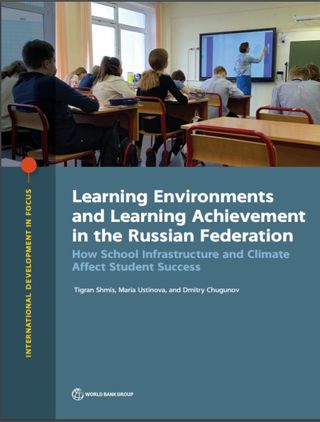?
Learning Environments and Learning Achievement in the Russian Federation
This book presents the main findings of a study on school learning environments and student outcomes, which the World Bank conducted in 2019 in three regions of the Russian Federation. Using data collected through the OECD School User Survey and the pilot “Trends in Mathematics and Science Study” (TIMSS), the book analyzes how a school’s infrastructure and learning environment may affect the progress and success of students in math and science. It also delves into teaching practices, analyzing their impact on learning and highlighting the important nexus between learning environments and teaching methods. The book concludes by recommending areas in which focused attention by educational authorities could improve educational policy and help maintain high-quality learning environments. The book will be useful for educators, school principals, architects, and policy makers who are involved in school infrastructure projects and are interested in increasing their knowledge of school design planning.
